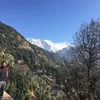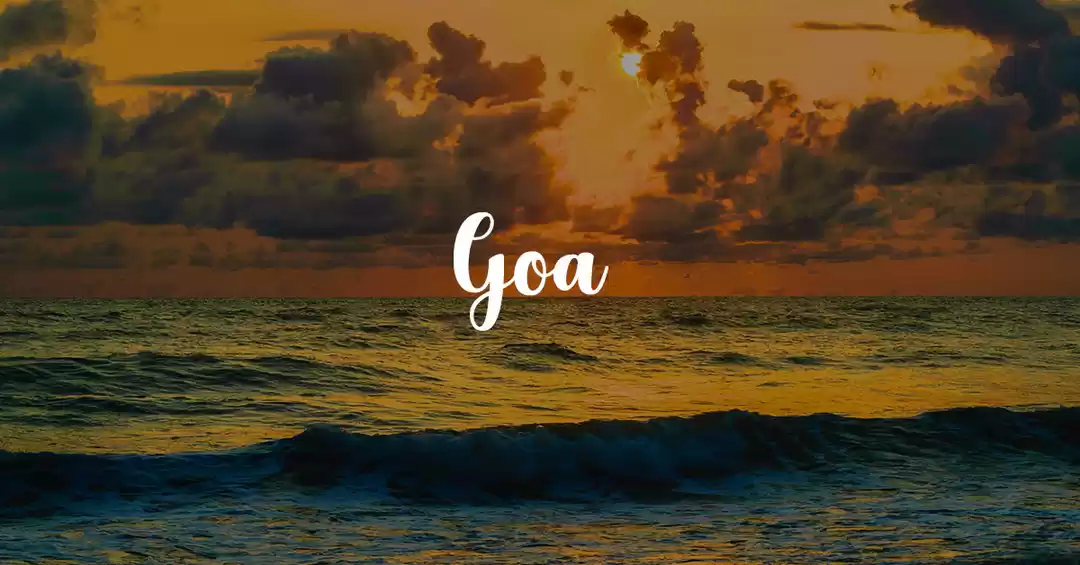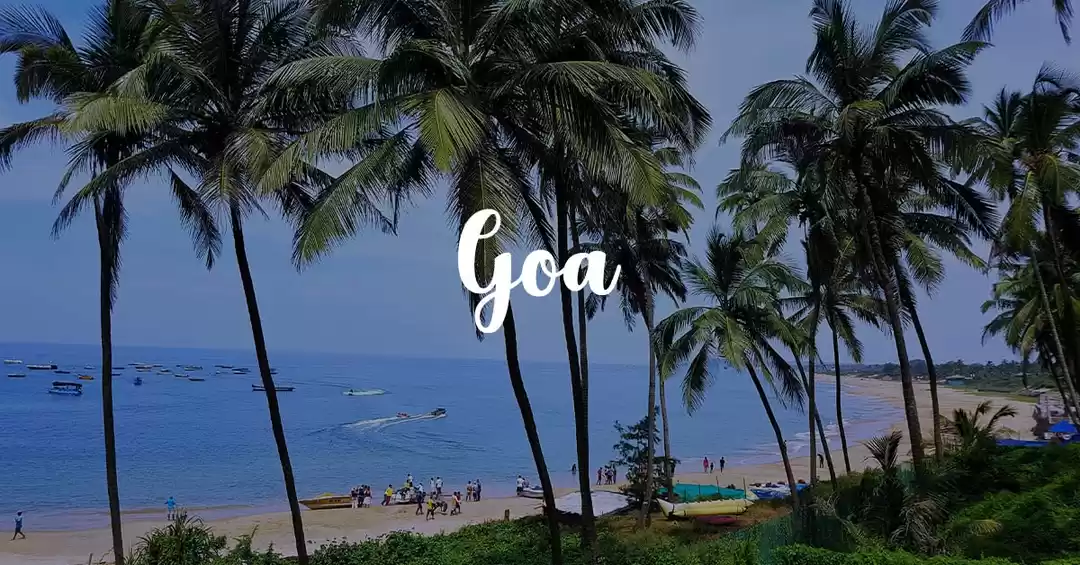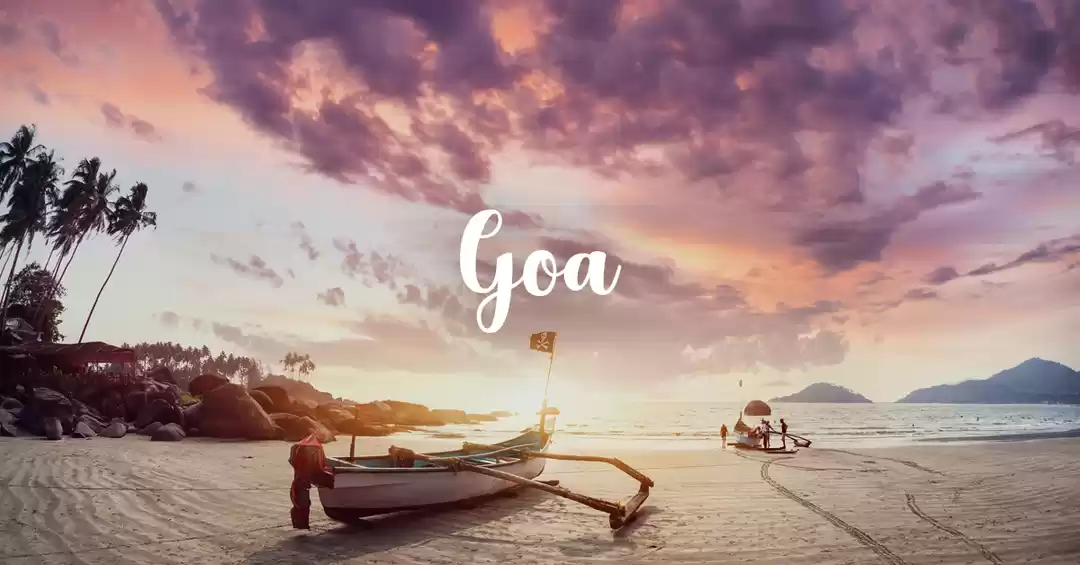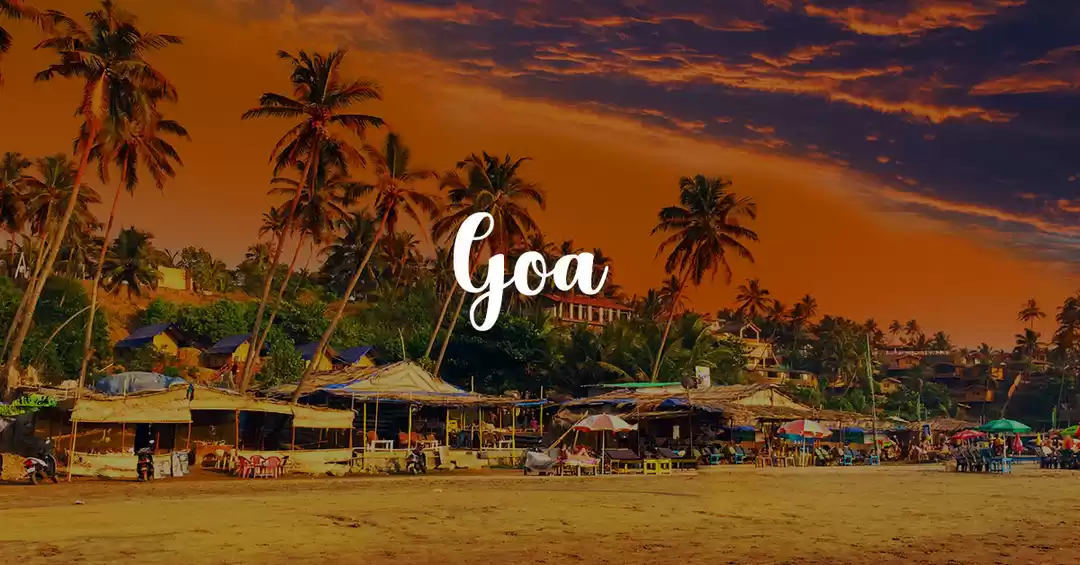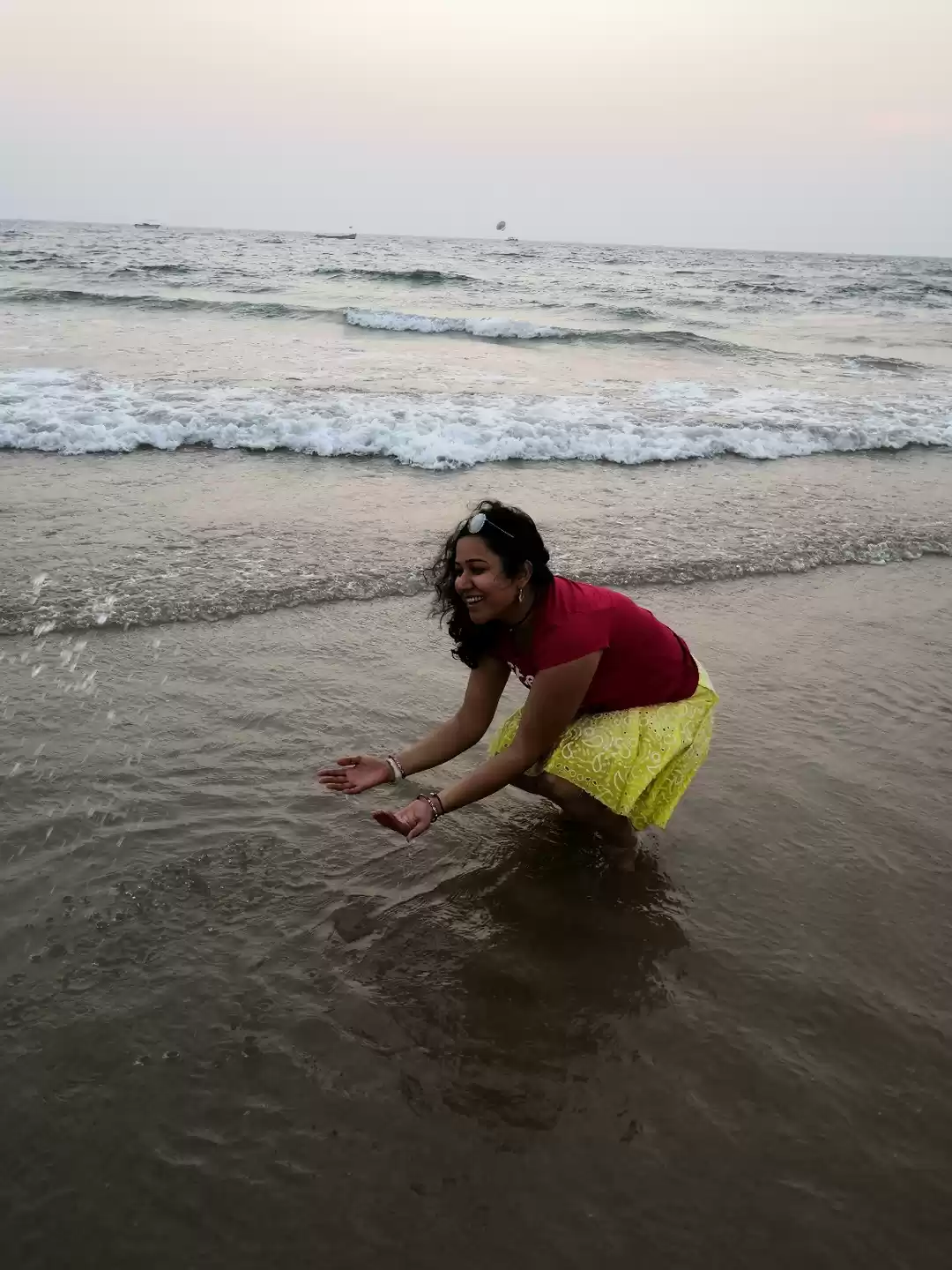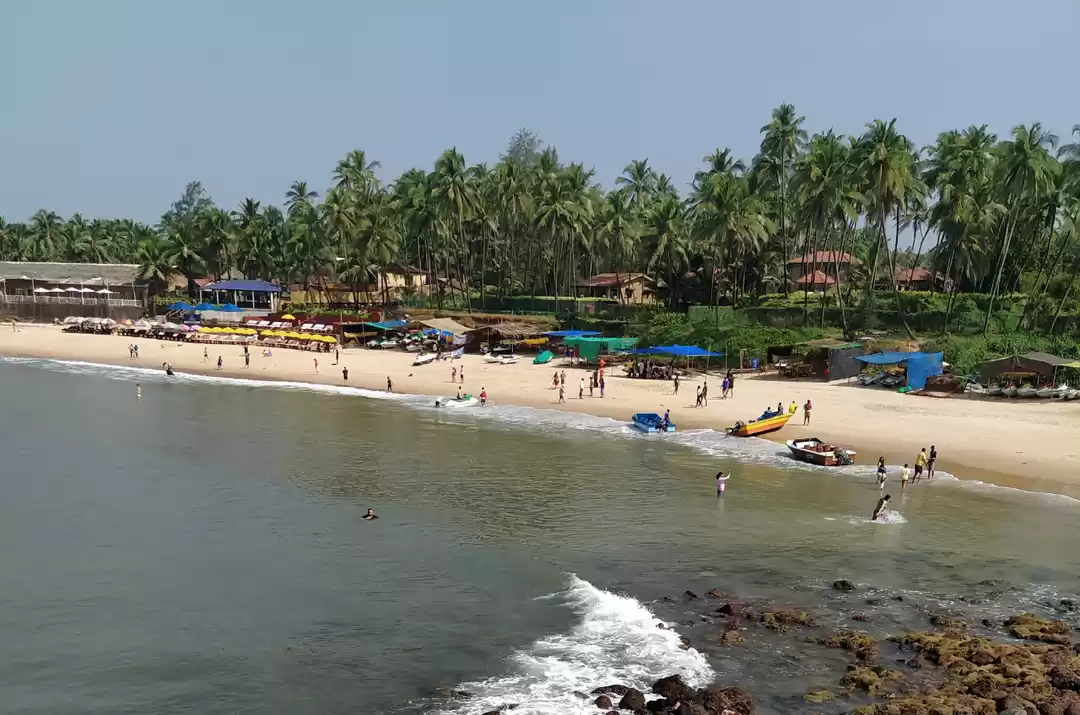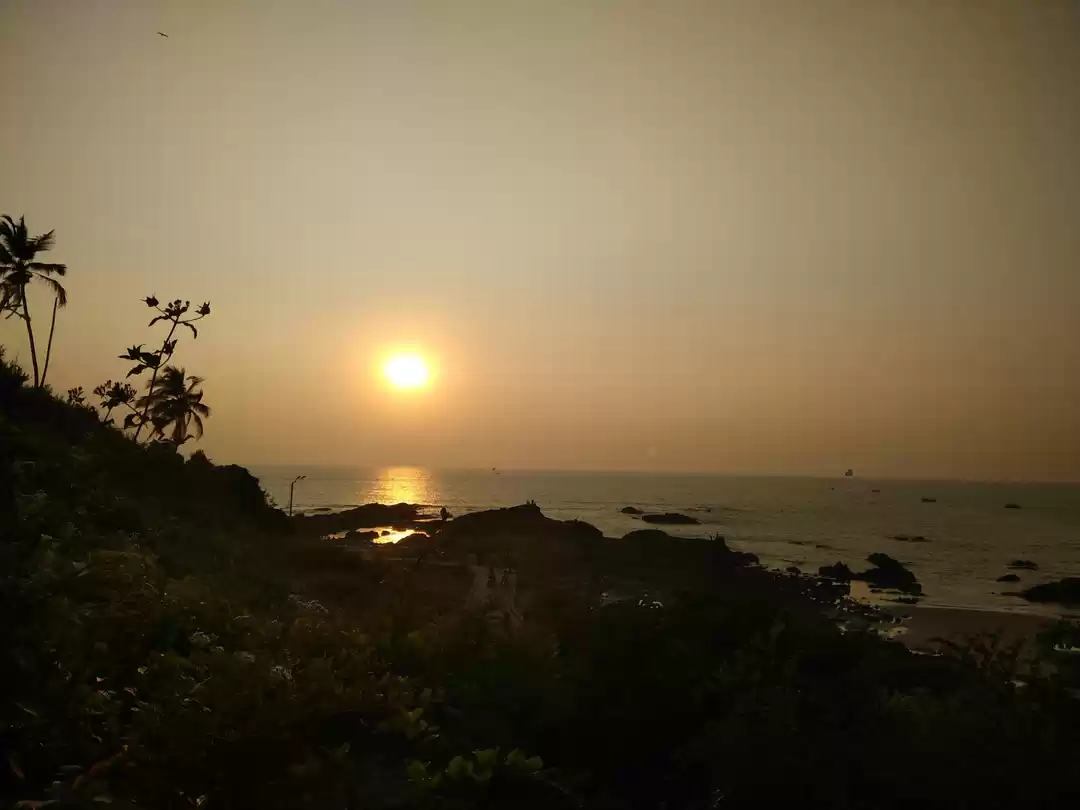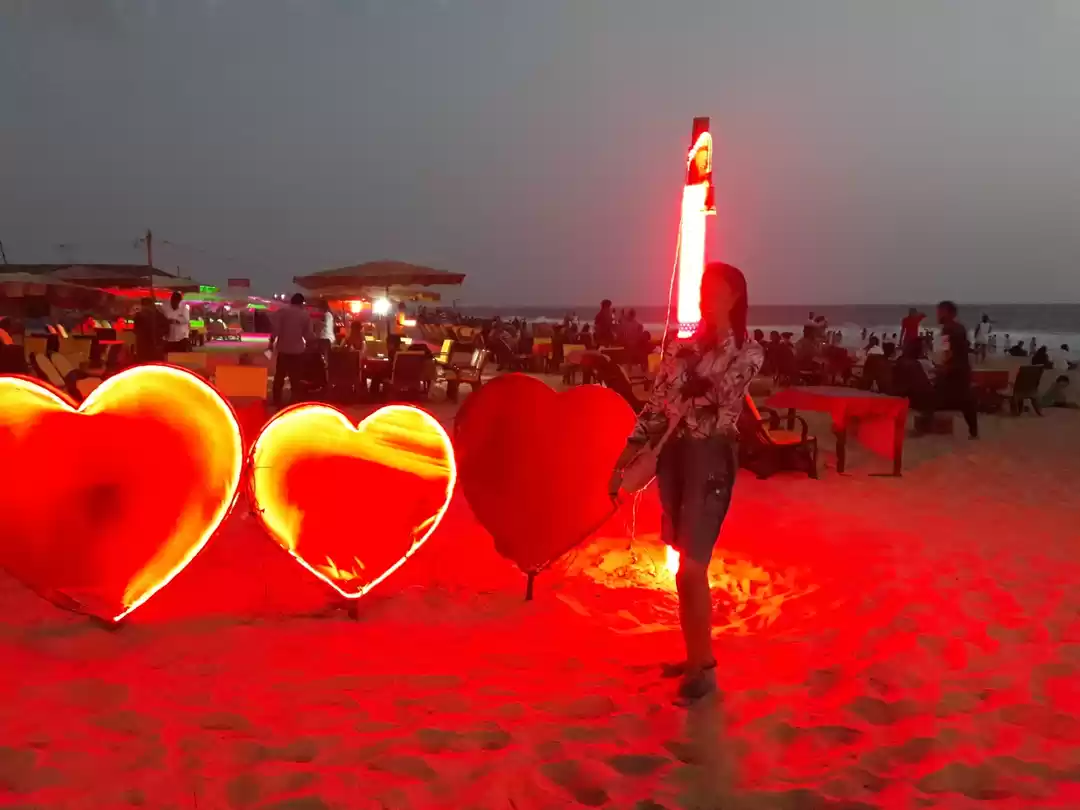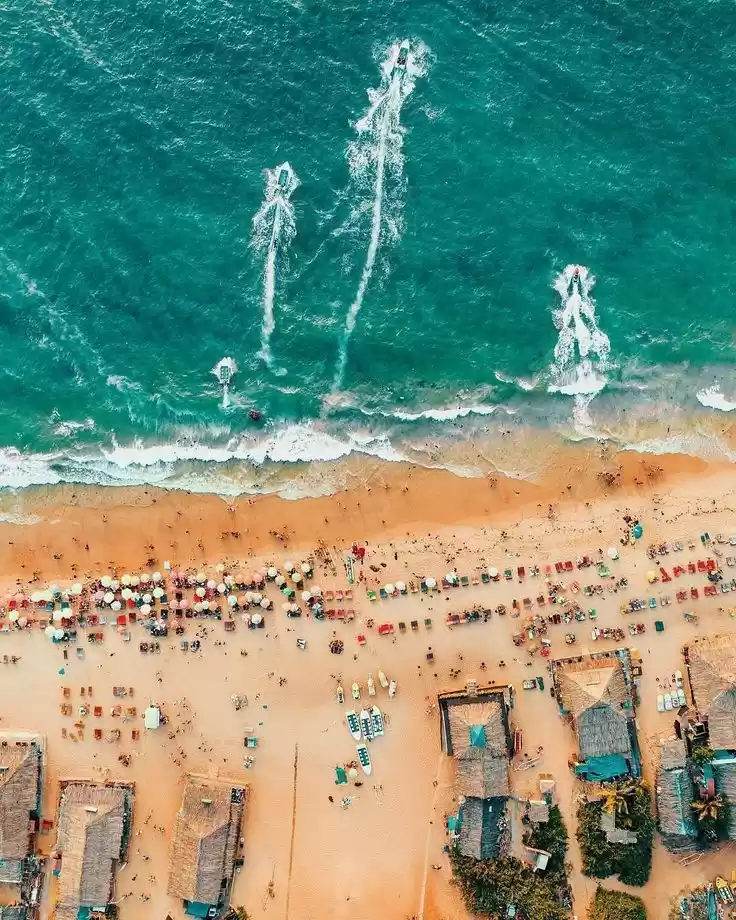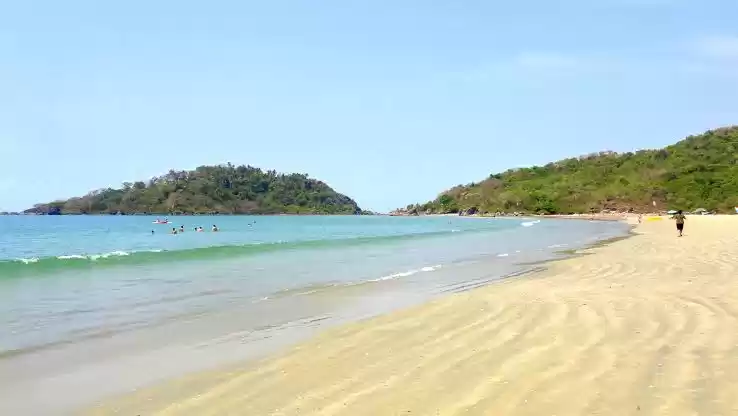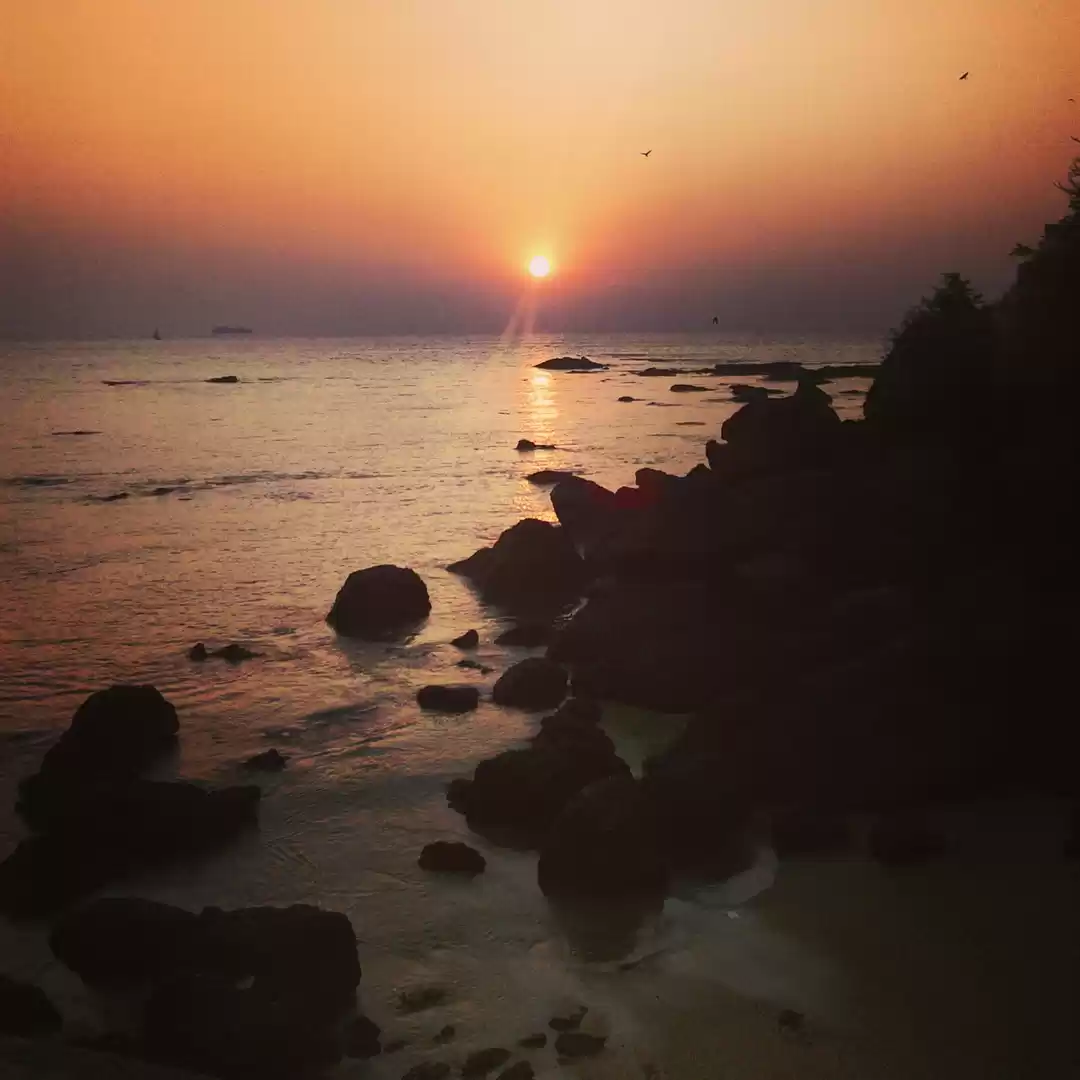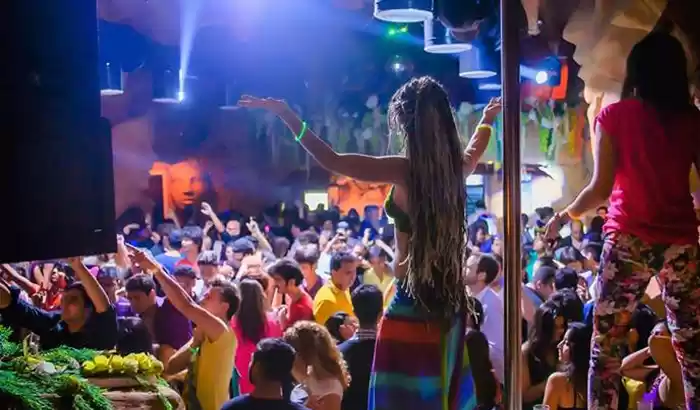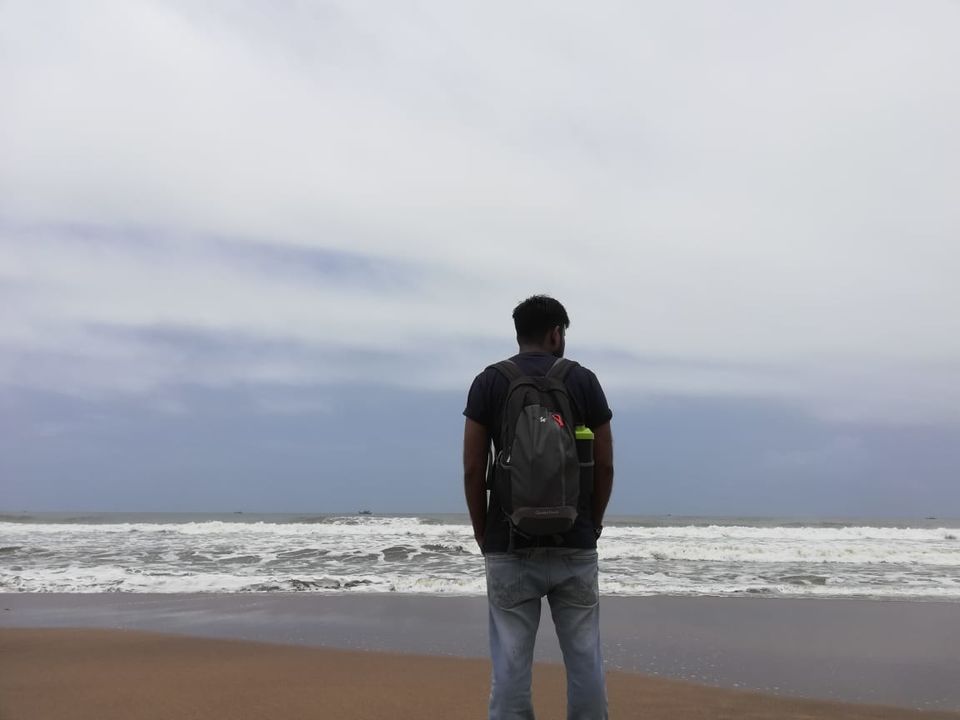
Hola fellas, let me tell you about myself first, am Nikhil Talwar a part-time Travel Blogger | DJ | Producer & Hippie Soul, i run this blog Voyageurs from Delhi to spread travel knowledge as much as i can. So the journey starts from my bike. Yeah! you read right i sold my bike for this trip & straight away i booked my returned ticket from indigo DEL-GOA-DEL because i don't have full-time job i had to do this. I promise myself to travel atleast two new places once in a year my last trip was Ajmer | Pushkar, Rajasthan | 25Jan2017 you should check it out on my Tripoto profile, it's been a long time i haven't step out from my studio & i really needed a break, i decided to explore North Goa and share whole new experience with you. "In this blog i only explore North Goa."
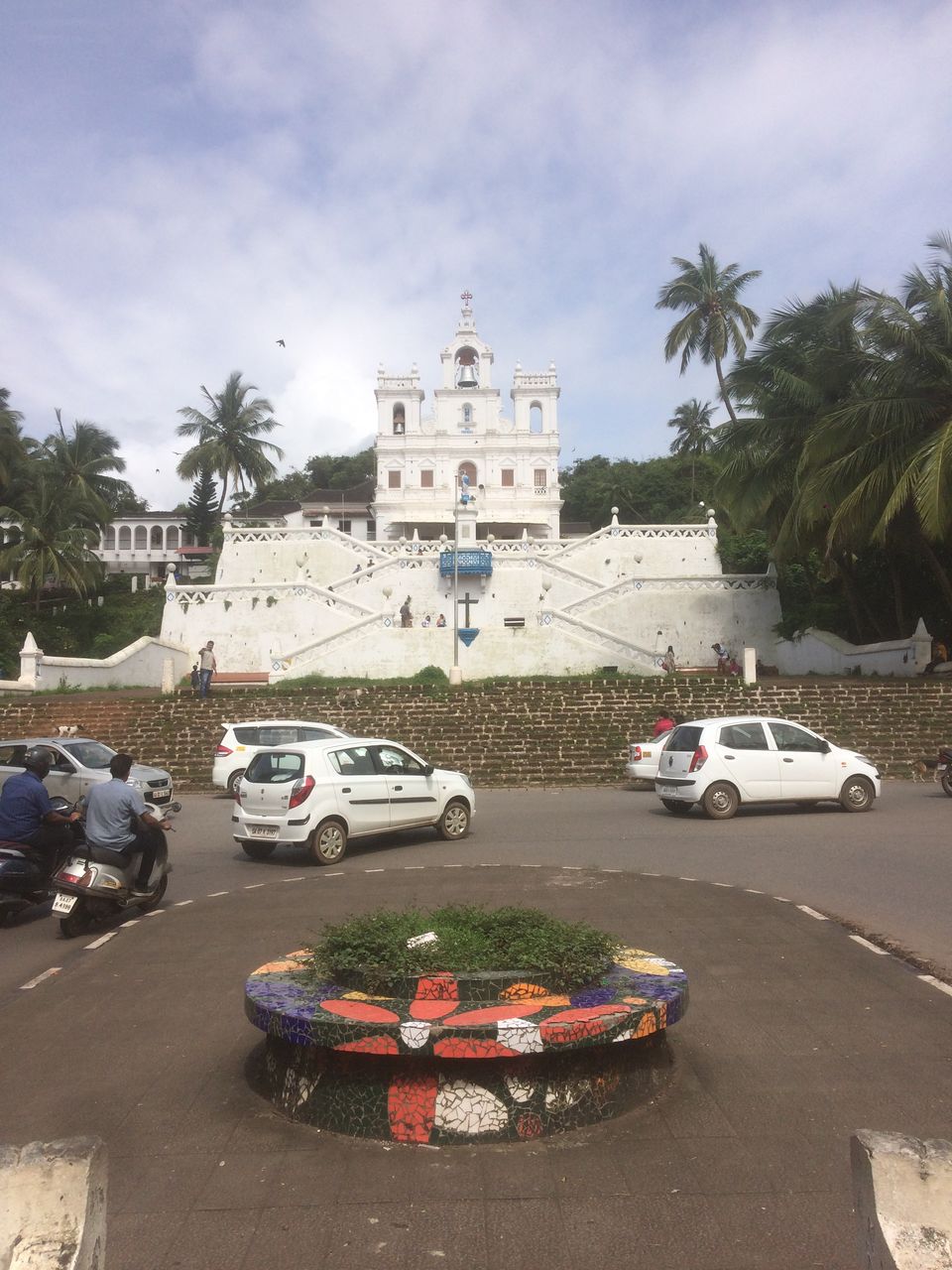
Goa, is situated on India's West coast, is a former Portuguese colony with a rich history. Spread over 3,700 square kilometres with a population of approximately 1.8 million, Goa is small by Indian standards. It has a unique mix of Indian and Portuguese cultures and architecture that attracts an estimated 2.5 million visitors each year (including about 400,000 foreign tourists).
Since the 1960s, Goa has been attracting a steady flow of visitors -- first the hippies and returning expatriate Goans, then the charter tourists (starting with the Germans in 1987).
Goa is visibly different from the rest of India, owing to Portuguese rule which isolated it from the rest of India for 451 years. The Goan population is a mixture of Hindus and Roman Catholics, the distribution being approximately 65% Hindu and 24% Christian. There is also a smaller Muslim population. Despite this, communal violence has been virtually non-existent and Goa is regarded as one of the most peaceful states in India.
Day 1 : Arrival at Dabolim airport and drove to Ann Blues guest house, this property is 9 minutes walk from the beach. Situated in Anjuna, Goa region, Ann Blues is set 500 m from Anjuna Flea Market. Mayank who is running this guest house you can contact him on +917038509156 to book this guest house show him this blog you will get a good deal also.
I rent a scooty from Walter at same place you can contact him on +919762677793 book your scooty show him this blog you will get a good deal & thanks me later in DM.
Day 2 : Ride to Chapora Fort 12 min (4.4 km) via Market Rd and Vagator Beach Rd. Fort Timing 10:00am to 05:30pm entry will be stoped at 05:00pm.
Chapora Fort, located in Bardez, Goa, rises high above the Chapora River. Before the Portuguese arrived in Goa in 1510, this location was the site of another fort. The fort changed hands several times after Portuguese acquired Bardez. Trying to end the Portuguese rule in Goa, Prince Akbar joined his father’s enemies, the Marathas in 1683 and made this place his base camp. It became the northern outpost of the Old Conquests. After the Portuguese recovered from an encounter with the Marathas, they strengthened their northern defences and provided shelter to the people there.
The present fort was built in 1717, replacing the older fortifications. Across the Chapora river, the Hindu ruler of Pernem, the Maharaja of Sawantwadi who was an old enemy of the Portuguese held the fort for two years after it fell to the Marathas in 1739 in its first test. When Goa's border moved northwards with the acquisition of Pernem as part of the New Conquests, the fort lost its military significance towards the end of the century. It is a pleasant place to wander that offers fantastic views north across the Chapora river to Pernem, south over Vagator and also far out to the Arabian Sea in the West.
The fort sits on a prominent position which commands views in all directions. It also has steep slopes on all sides. The fort follows the outline of the higher slopes. This forms an irregular outer wall that uses the natural form to add defensive height to the fortifications. This offers an advantage over dry ditches being dug. At the top of the steep approach track, the main gate is small and unpretentious, but narrow and deep. Depending on defence requirements, the positions of bastions are irregularly spaced with enormous embrasures for cannon. Each bastion has a cylindrical turret offering a special character to the fort.
Inside the fort, the church, once dedicated to St. Anthony, has disappeared and inside only a few signs exist of the barracks and housing that once filled this vast area. The wide expanse of open space is only a tumble of stones, where a few herds of goats graze and cashew bushes grow. A natural valley to the beach protected by rocky promontories provides an excellent natural access to the sea.
Day 2 : Chapora to Vagator Beach 5 min (1.6 km) via Vagator Beach Rd Vagator Beach is the northernmost beach of Bardez Taluka, Goa. It is located on the opposite bank of the Chapora River from Morjim in Pernem. To the south of Vagator is Anjuna, one of the first hippie haunts of Goa. Vagator Beach has dramatic red cliffs looking down on the shore and two fresh water springs within a stone's throw of the sea. But Vagator has little by way of seaside accommodation. Vagator Beach is split into two main beaches by a seaside headland which holds the car park and lots of stalls selling trinkets, clothes, soft drinks and snacks. As you face the sea, on your right is North Vagator Beach (Big Vagator) and on your left Ozran Beach(known as Nude beach of Goa), more commonly known as Little Vagator Beach. Vagator is a little more laid back, though still pretty much steeped in the rave culture. The tourist traffic is predominantly Western backpackers, however it has also become popular with Indian tourists, who particularly come to watch the sunset from the rocks. The sunset through rocks is breathtaking from Vagator Beach.
There are a number of places playing to a dance & trance crowd during the tourist season. These include: Nine Bar located just above Little Vagator, Hilltop (a little back from Little Vagator) and Primrose back towards Big Vagator beach, they play different types of trance and psychedelic music from different DJ's from around the world. Disco Valley of Vagator Beach is a place that used to be the place for Goan trance parties starting from very early 1990s. Also there are a number of Mediterranean and Indian Cafes/Hotels serving a variety of food and drink. 2013 saw the popular Sunburn Festival shift its base to Vagator from Candolim Beach.
Day 2 : Vagator Beach to Morjim Beach 30 min (13.6 km) via Pernem – Agarwada - Morjim.
Morjim is a Census Town in Pernem, Goa, India; it is situated on the northern bank of the Chapora River estuary. It is home to a variety of birds and is a nesting site for Olive ridley sea turtles. The village has become known as "Little Russia" because of the concentration of Russian immigrants living there. [before you go do google about this village because this village is also known as 'Drug Mafia" "Russian Mafia"]
Morjim Beach is a nesting and hatching habitat of the Olive ridley sea turtle, an endangered species. They are afforded the highest degree of protection under Indian law through their inclusion in Schedule I of the Wildlife Protection Act of 1972. Egg-poaching or in any manner disturbing the turtles or their habitat is an offence punishable under Indian law. Protection of marine turtles and their habitat has been embraced by the local community through community-based conservation efforts. These efforts were begun between 1995 and 1996 by a number of local villagers after discussions with Goa-based environmental protection groups. Before this time, the eggs were poached by fishermen, but later the fishermen became fiercely protective of marine turtles. The Goa Forest Department supports the turtle conservation efforts and has set up a Turtle Conservation Interpretation Centre at the Forest Office in Pernem using funds allotted by the Central Government of India. The Forest Department pays a monthly stipend to young, local volunteers involved in marine turtle conservation efforts in Morjim. A few of these volunteers have found jobs with the Forest Department in recognition of their efforts. Some youth of Morjim have campaigned internationally on the Greenpeace ship Rainbow Warrior. The Tourism Department of the Government of Goa has aided the conservation efforts by restricting temporary seasonal structures (e.g. shacks) to a portion of the beach and requiring them to operate only during daylight hours. Owners of the structures are also legally obliged not to leave beach furniture on the beach after daylight hours and not to do anything that would adversely affect marine turtle conservation. Despite the ban, an Indian fashion show with illumination and music was held well into the night on 10 December 2011, flouting the law and outraging environmentalists and locals.
In 2011 the turtles can hardly be seen because of urbanisation, light pollution and noise pollution. According to a recent study of international researchers Morjim's wildlife is doomed and the village is expected to be the next Calangute.
Vada Pav, is a vegetarian fast food dish native to the Indian state of Maharashtra. The dish consists of a deep fried potato dumpling placed inside a bread bun (pav) sliced almost in half through the middle. It is generally accompanied with one or more chutneys and a green chilli pepper. It originated as cheap street food in Mumbai, but is now served in food stalls and restaurants across India. It is also called Bombay Burger in keeping with its origins and its resemblance in physical form to a burger. A quick snack help you a lot from sudden starve while roaming in Goa.
Day 2 : Morjim to Ashwem Beach 9 min (3.0 km) via Morjim Beach Road
Mandrem is a coastal village famous as a tourist spot in Pernem taluka in North Goa district of Goa state in India. It is 21 km from the capital Panaji. It has two main beaches viz Junas and Ashvem. Mandrem Beach is a white sand beach with clear water. The beach of Mandrem lies between the twin beaches of Ashwem and Arambol. This beach is a quiet and peaceful beach. The beauty of Mandrem Beach is especially during the High Tide time when the sea water rushes into the Mandrem Creek or River. This Mandrem creek moves parallel to the waterline. Mandrem has a small fishing community and occasionally one might see local fishermen hauling their catch from the sea.
Day 2 : Ashwem to Arambol Beach 16 min (7.0 km) via Querim–Arambol–Agarwada Rd
Arambol is a traditional fisherman village, located approximately a one-hour drive from Dabolim Airport (GOI) within the Pernem administrative region of North Goa, India. The beach attracts many international tourists, mainly during the winter season between November and March. Arambol has a distinct Bohemian feel which attracts many alternative travellers. Arambol beach is considered to be one of the most beautiful beaches in Goa, bordering Keri Beach to the north and Mandrem Beach to the south. Located 43km north of Goa's capital city of Panaji, Arambol has a population of around 5300.
That's it for the Day 2 : now Arambol to Ann Blues Anjuna 41 min (20.9 km) via Querim–Arambol–Agarwada Rd
Day 3 : Ann blues to Old Goa 49 min (28.6 km) via NH 66 and NH748
The Basilica of Bom Jesus or Borea Jezuchi Bajilika (Portuguese: Basílica do Bom Jesus) is located in Goa, India, and is a UNESCO World Heritage Site. The basilica holds the mortal remains of St. Francis Xavier. The church is located in Old Goa, which was the capital of Goa in the early days of Portuguese rules.'Bom Jesus' (literally, 'Good (or Holy) Jesus') is the name used for the Ecce Homo in the countries of Portuguese colonization. The Jesuit church is India’s first minor basilica, and is considered to be one of the best examples of baroque architecture in India.
Construction work on the church began in 1594. The church was consecrated in May 1605 by the archbishop, Dom Fr. Aleixo de Menezes. This world heritage monument has emerged as a landmark in the history of Christianity. It contains the body of St. Francis Xavier, a very close friend of St. Ignatius Loyola with whom he founded the Society of Jesus (the Jesuits). Francis Xavier died on Sancian Island while en route to continental China on (December 3, 1552). The body of Francis Xavier was first taken to Portuguese Malacca and two years later shipped back to Goa. It is said that the saint's body was as fresh as the day it was buried. The remains of the saint still attract a huge number of tourists (Christian and non-Christian alike) from all over the world, especially during the public viewing of his body every ten years (last held in 2014). The saint is said to have miraculous powers of healing.
This is one of the oldest churches in Goa and in India. The floor is of marble inlaid with precious stones. Apart from the elaborate gilded altars, the interior of the church is simple. The main altar holds a large statue of St. Ignatius of Loyola, the founder of the Society of Jesus (Jesuits), and one of Francis Xavier's companions whose words drew him to a reformed life. "What does it profit a man," Ignatius had asked Francis, "if he gains the whole world and loses his soul?" The gaze of the gilded statue of Ignatius of Loyola is fixed upwards in awe at the name of Jesus (IHS) on the gilded emblem of the Jesuits, encircled in radiant rays. Over the emblem, is the Holy Trinity -Father, Son and Spirit - the ultimate muse and focus of the pious Christian. The altar table which is used in Holy mass is gilded and adorned with the figures of Christ and his apostles at the Last Supper, along with the words "Hi Mhoji Kudd", which in Konkani means "This is my Body", from the Institution Narrative.
The church also holds paintings of scenes taken from the life of St. Francis Xavier. The mausoleum, on the top of which is placed the silver casket with the body of St. Francis Xavier (1696), was the gift of the last of the Medicis, Cosimo III, the Grand Duke of Tuscany.
The mausoleum was designed by the 17th-century Florentine sculptor Giovanni Battista Foggini. It took ten years to complete. The casket containing his body is made of silver. The holy relics of the saint are displayed every ten years during the anniversary of the saint's death. His liturgical feast is 3 December.
On the upper level, overlooking the tomb, is the Bom Jesus Basilica Art Gallery, containing the works of the Goan surrealist painter, Dom Martin. Author and fellow Jesuit Anthony De Mello was also from Goa and mentions the basilica in his writings. The body is shown every ten years.
The Basilica of Bom Jesus is more than 408 years old and is open to the public every day. The body of St. Francis Xavier is in a well-decorated casket, which can be seen in the photographs. Solemn exhibitions of the 'body' are held every ten years. Some photos taken inside the church are attached for better understanding of the art work of that time. These art works are called "murals".
Day 3 : Old Goa to Divar Island port is less a 1km. After a two hours of Basilica of Bom Jesus (Old Goa) tour i went for Divar Island tour there is port where ferry takes you to Divar Island port from old goa port, i roam around half an hour on divar island is was pretty good. If you are on your vehicle you can take your vehicle to another port through ferry at free of cost. Yes, free of cost two wheeler you can move one port to another, if you are on four wheeler you have to pay some bucks for that. The island of Divar (Konkani: Divaddi, pronounced) (derived from the word Dipavati or 'small Island' in Konkani) lies in the Mandovi river in the Indian state of Goa.
Day 3 : Divar Island to Ribander 9 min (7.3 km) via NH748 please check the ferry timings before you go. Chorão, also known as Choddnnem or Chodan, is an island along the Mandovi River near Ilhas, Goa, India. It is the largest among other 17 islands of Goa. It is located 5 kilometres (3.1 miles) away from the state capital, the city of Panaji and 10 kilometres (6.2 miles) away from the city of Mapusa. Even today, one can visit this area and see the distinct churches, graveyards and buildings all with a Portuguese air. Chorão is accessible by the ferry from Ribandar, is mainly known for its beautiful bird sanctuary. If you arrive here with your own transport it's worth a ride through the countryside to little Chorão village, with its handful of whitewashed village churches and picturesque Portuguese homes.
The Chorão Island is attractive primarily because of its amazing flora and fauna. Here you will see lots of mangroves – the amazing and beautiful forests growing in the water. Chorão is also home to the Salim Ali Bird Sanctuary, in the western part of the island, on an area of 178 hectares. It is the largest bird sanctuary of Goa is located. The reserve has got its name from the famous Indian ornithologist Dr. Salim Ali and now it proudly bears the name of "Salim Ali Bird Sanctuary". The territory of this National Park is inhabited by migratory and local birds of over 400 species. The crocodiles can also be seen among the aquatic inhabitants of Salim Ali Bird Sanctuary.
Day 3 : Ribander to Panjim 10 min (4.9 km) via NH748 The Our Lady of the Immaculate Conception Church is located in Panjim, Goa, India. The Church conducts mass every day in English, Konkani, and Portuguese.
The colonial Portuguese Baroque style church was first built in 1541 as a chapel on a hill side overlooking the city of Panjim. It was eventually replaced by a larger church in the 1600s as part of Portuguese Goa's religious expansion. This church houses the ancient bell that was removed from the Augustinian ruins of the Church of Our Lady of Grace (Nossa Senhora da Graça) in the once famed city of Old Goa. This bell is considered to be the second largest of its kind in Goa, surpassed only by the Golden Bell which resides in the Sé Cathedral in Old Goa. A chapel was first built in Panaji in 1541, to serve the religious needs of Portuguese sailors at their first port of call in colonial Portuguese India. At that time the settlement was a small fishing village. It became a Parish in 1600, and in 1609 the small chapel was replaced by the present day large church to minister to the residents and sailors. In the 18th century the stairways, in a symmetrical zigzag form, were added to the church. The second largest church bell in Goa was installed in a bell tower in 1871. It was formerly at the Augustinian Monastery on Holy Hill, and was retrieved after the monastery was damaged. The church is located in Panjim and sits atop a hill facing the square below. The city's municipal garden (Garcia da orta) lies to its southeast and can be seen from atop the hill. The site was once the location of a colonial port landing where ships sailing from Lisbon made first call, and where sailors disembarked before they proceeding further inland to Ela (now Old Goa) - the capital of Goa until the 19th century. A laterite stone walkway with ziz-zag stairs ascend the church while lines of thin and tall palm trees form part of the scene.
Panaji also known as Panjim, (Portuguese: Pangim) is the capital of the Indian state of Goa and the headquarters of North Goa district. It lies on the banks of the Mandovi River estuary in the Ilhas de Goa sub-district (taluka). With a population of 114,759 in the metropolitan area, Panjim is Goa's largest Urban agglomeration, ahead of Margão and Vasco da Gama. Panjim has terraced hills, concrete buildings with balconies and red-tiled roofs, churches, and a riverside promenade. There are avenues lined with gulmohar, acacia and other trees. The Baroque Our Lady of the Immaculate Conception Church is located overlooking the main square known as Praça da Igreja. Panjim has been selected as one of hundred Indian cities to be developed as a smart city under the Smart Cities Mission. This city of stepped streets and a seven kilometer long promenade was built on a planned grid system after the Portuguese relocated the capital form Velha Goa in the 17th century. It was elevated from a town to a city on March 22, 1843 making it the oldest civic institution in Asia (175 years). Panjim was annexed by India with the rest of Goa and the former Portuguese territories after the Indian invasion of Portuguese India in 1961. It became a state-capital on Goa's elevation to statehood in 1987. Between 1961 and 1987, it was the capital of the Union Territory of Goa, Daman and Diu. A new Legislative Assembly complex was inaugurated in March 2000, across the Mandovi River, in Alto Porvorim. Panjim is also the administrative headquarters of North Goa district.
Day 3 : Panjim to Dona Paula 16 min (5.4 km) via DB Marg Dona Paula is a former village, and tourist destination, in the suburbs of Panaji, Goa, India. It is today home to the National Institute of Oceanography, and just alongside it lie the Goa University and the International Centre Goa. It is also home to a number of hotels, small and large, and the luxury Cidade de Goa is situated in the area.
Dona Paula located on the beautiful and famous sea stretch that spans from Panjim, Miramar and Dona Paula is a very famous area frequented by tourists. During the tourist season, Dona Paula transforms into a crowded stretch which is otherwise a calm beautiful place during monsoons. A large part of the famous Hindi movie Ek Duuje Ke Liye was shot here, popularising the place further. An action sequence from Rohit Shetty's movie Singham was shot here. The idyllic rocky tourist attraction lies at the spot where the Mandovi and the Zuari rivers meet and confluences with the Arabian Sea at a distance of 1 km from this point.
Day 3 : Dona Paula to Miramar 8 min (4.2 km) via Dr Jack de Sequeira Rd
Miramar is the beach area of the Goan capital of Panjim, also known as Panaji and is one of the most visited beaches of Goa. It is one of the two only beaches in Panjim, other being Caranzalem beach. Many people, mostly tourists, come to this beach every day. Originally named Porta de Gaspar Dias by the Portuguese, the name was then changed to Miramar. Situated at the confluence of the Mandovi River and the Arabian Sea, it is a small beach that occasionally hosts some events.
Day 3 : Miramar beach to Anjuna beach 59 min (23.6 km) via NH 66 Anjuna is a village located on the coast of North Goa, India. It is a Census Town, one of the twelve Brahmin comunidades of Bardez. It is mostly a tourist destination. Historian Teresa Albuquerque, reports that the village's name is derived from the Arabic word 'Hanjuman' (meaning merchant guild). Other say, it comes from an Arabic word for "change" - as people were arriving at Anjuna from the sea, and were looking to change money.
It was discovered by the hippies during the 60's, then was a center of backpackers and trance parties lovers, and lately became a popular destination for young big-city Indians.
Luckily i met Darsha aunty at 6pm Anjuna while roaming on beach she offers me home made tea and vada pav seriously it was damn awesome, i was there for sunset at Anjuna she daily came there to serve home made snacks 6pm to 8pm dailyr, if you found her anyday, anytime please try her snack and support her because she is survive on this i hope you get my point, you can approach her also on +918806401676 Darsha aunty.
Anjuna is famous for its trance parties held on the beach during the tourist season (October - April). Anjuna also hosts the famous flea market (Every Wednesday) and (every Saturday) where you can purchase products from all over India, as well as from foreigners, ranging from fruits to jewelry, clothes, hashish and electronic devices.In Wednesday they have day market which starts from morning and ends at 7:30pm and on Saturday they have night market. Anjuna beach is also famous for the hippie lifestyle.
Above & Beyond are electronic music DJ, Formed in 2000, they are the owners of London-based electronic dance music labels Anjunabeats. Anjuna beach is a place where Above & Beyond's find their record labels name, Anjunabeats and Anjunadeep, as well as their radio show, 'Anjunabeats Worldwide,' all make reference to Anjuna. In 2009, they also released a track called 'Anjunabeach.'
Trust me this beach has it's own vibe, i heard about a lot of things, that is why i choose Ann Blues for stay, during my trip i don't know why i visited this beach once in a day. Anjuna beach has amazing cafe like Shiva vally, Curlies, cafe Lilliput you should check it out.
Day 4 : Breakfast! finally i found North Indian food on the way to Aguada fort. Aloo Paratha is a bread dish originating from the Indian subcontinent the recipe is one of the most popular breakfast dishes throughout western, central and northern regions of India.
Day 4 : Ann Blues to Aguada Fort 40 min (14.6 km) via Aguada - Siolim Rd! Fort Aguada and its lighthouse is a well-preserved seventeenth-century Portuguese fort standing in Goa, India, on Sinquerim Beach, overlooking the Arabian Sea.
The fort was constructed in 1612 to guard against the Dutch and the Marathas. It was a reference point for the vessels coming from Europe at that time. This old Portuguese fort stands on the beach south of Candolim, at the shore of the Mandovi River. It was initially tasked with defense of shipping and the nearby Bardez sub district.
A freshwater spring within the fort provided water supply to the ships that used to stop by. This is how the fort got its name: Aguada, meaning Water. Crews of passing ships would often visit to replenish their fresh water stores. On the fort stands a four-storey Portuguese lighthouse, erected in 1864 and the oldest of its kind in Asia. Built in 1612, it was once the grandstand of 79 cannons. It has the capacity of storing 2,376,000 gallons of water, one of the biggest freshwater storages of the time in whole of Asia.
This fort is divided in two segments: the upper part acted as fort and watering station, while the lower part served as a safe berth for Portuguese ships. Whereas the upper part has a moat, underground water storage chamber, gunpowder room, light house and bastions, it also has a secret escape passage to use during time of war and emergency.
The lighthouse at initial stage is used to emit light once in 7 minutes. In 1834 it was changed to emit light creating eclipse every 30 seconds, however it was abandoned in 1976.
Fort Aguada was the most prized and crucial fort of Portuguese. The fort is so large that it envelops the entire peninsula at the south western tip of Bardez. Built on the mouth of river Mandovi, it was strategically located and was the chief defence of Portuguese against the Dutch and Marathas.
Day 4 : Aguada Fort to Sinquerim Fort 10 min (3.2 km) via Aguada - Siolim Rd/Fort Aguada Rd. The Sinquerim Fort is located at a distance of 18 kms. from Panaji. The fort stands overlooking the Sinquerim beach and bisects the shoreline into two. This fort was constructed in the year 1612. The is an extension of the larger upper Aguada fort. The lower fort consists of a bastion and a section of fortified wall on both sides. During the 16th and 17th Century ships used to anchor next to the fort.
The main intention of building the fort was to guard Goa against the Dutch and the Marathas. The fort served as a reference point for vessels coming from Europe. On the right hand side of the fort lies the Taj Holiday Village resort, which is well known amongst tourists. In the distance one can see the Candolim beach and the river princess stranded amongst the waves. Between the Taj holiday resort and the lower fort lies the Sinquerim beach. One can find many tour operators here who conduct waters port activities such as jet ski rides, paragliding and dolphin tours. On the left hand side of the bastion is a fortified wall and rocky outcroppings.
The Sinquerim Beach is stunningly beautiful and quieter than the other beaches of Goa. This long, extended sandy terrain that runs incessantly along the coast is ideal for taking a walk. The feel of the glistening sands and the cool water caressing the feet gives you out of the world feeling. The beach is one of a series of tranquil and spectacular stretch of sand and an ideal place for swimming. The tourists come down to this beach and prefer it for its pristine and serene setting.
The lovely beach of Sinquerim is one of the oldest preserved beaches in Goa. The famous fort Aguada is located near the beach. Fort Aguada was built by the Portuguese in the early 17th century Portuguese fort that was built by the Portuguese to defend themselves against any foreign attack and to control the entry of the intruders through River Mandovi.
Sinquerim beach Goa is one of the finest beaches in Goa that offers world-class water sports facilities to tourists. Beach activities here involve swimming, as sea is relatively calmer here. Other activities on the beach are the regular activities like strolling along the crystal-clear azure waters, chilling out lazying about on the beach. People love indulging in aqua sports like surfing, water skiing, fishing, scuba diving and para sailing. Playing beach volleyball and sand castle making is equally great fun. Sinquerim beach stretches upto Candolim beach, which continues all the way north to Baga. Being a major tourist destination there are large number of hotels in the close environs of Sinquerim Beach. The numerous hotels and resorts near Sinquerim Beach provide the best kind of services and facilities. Moreover, there are a number of budget hotels.
Day 4 : Sinquerim Fort to Candolim 10 min (3.1 km) via Aguada - Siolim Rd/Fort Aguada Rd. Candolim is a census town in North Goa and is located in the Bardez taluka in the state of Goa, India. It is situated just south of the famous Calangute Beach, and is a popular tourist destination.
During the late 16th century, Candolim became the first village to be entirely converted to Christianity in Bardez by the Franciscans. The present Christian identity of its villagers dates back to the conversion of Santu Sinay (Shenoy), a ganvkar (Konkani: freeholder) who belonged to the nobility of his people. Santu Sinay (1577–1640), was the son of Naru Sinay; who had earlier migrated from Loutolim, Salcette, and established himself in Candolim, where he purchased the fifth vangodd (clan) of the comunidade on 13 August 1604. Naru Sinay died after 1624, and was survived by his wife, four sons—Jeronimo de Souza, Manoel de Souza, Santu Sinay, and Christovão d'Andrade, and one daughter, Quiteria de Souza. Santu Sinay was converted along with the rest of his family at the age of 8, and subsequently took the name of Salvador Pinto. His godfather was Fr. Manoel Pinto, a Franciscan rector of the Church of Our Lady of Hope of Candolim and the seminary of Reis Magos. He was brought up in the seminary of Reis Magos, where he developed a great devotion to St. Francis Xavier. Salvador Pinto was tutored by two Franciscan priests, Fr. Pinto and Fr. Simão de Nazareth; who succeeded the former as rector of Candolim parish. Salvador Pinto worked zealously to spread Christianity in the village. Fr. de Nazareth held great influence with the Viceroys and in recognition of Salvador Pinto's tremendous work in converting the village, obtained for him many life grants and concessions which are still held by his descendants. Fr. de Nazareth, as representative of Fr. Miguel de S. Bonaventura—Custodian and General Commissioner of East Indies and Diogo Dias, syndic of St. Francis and procurator of His Holiness—granted two perpetual graves in the Candolim Church, to Salvador Pinto and his father-in-law António Pereira in the transept, in front of the altar of Bom Jesus, and also to his wife and mother-in-law, Maria and Catharina Pereira in the transept; her grave located between those of two parishioners, Pedro Sequeira and Francisco de Souza. Candolim was the focal point of the anti-Portuguese revolt of 1787, also called the "Conspiracy of the Pintos", because it was spearheaded by priests belonging to the village's Pinto (Shenoy) clan.
Candolim lies 15 kilometres from Panjim, the Goan capital, in northern Goa. Beginning at Fort Aguada and merging with Calangute Beach towards the end, it is one of the longest beaches in the state. The beach in itself is very calm and peaceful, at times tourists come here from Rajneesh Ashram in Pune to take a break. What adds to the scenic beauty of the sand and sea are the scrub-covered dunes at the back of the beach, quite popular with tourists. The main Candolim-Calangute Road is packed with shops and restaurants, but the beach front is rather free of any commercial activity apart from some water activities. Though the beach is close to bustling Calangute Beach, life is rather laid back at Candolim. Even the village is not very clustered, it is quite spread out so there is not any proper centre to it as such. The area around the beach can be termed as resort free as there aren't any resorts there. However, the beach has quite a number of inns at reasonable prices with good facilities. A fascinating feature about the Candolim Beach is the ship River Princess, which has been stuck at the shores of the beach since 2000 and ever since become quite a tourist attraction in itself.
Day 4 : Candolim to Calangute 7 min (2.2 km) via Aguada - Siolim Rd/Fort Aguada Rd Calangute is a town in North Goa, famous for its beach. The beach is the largest in North Goa and visited by thousands of domestic and international tourists alike. The peak tourist season is during Christmas and New Year, and during the summer in May. During the monsoon season, from June through September, the sea can be rough and swimming is prohibited. The beach offers water sport activities like parasailing and water skiing, among others.
Calangute has secondary education schools viz. Little Flower of Jesus High school , St. Josephs High school, Don Bosco High School, Mark Memorial High School, apart from the Government Primary schools located in Umtavaddo & Naikavaddo.
Like any other Goan village, Calangute's most famous sport is football. The local football club is Calangute Association, which represents them in Goa's top-tier league, the Goa Professional League. I am glad that i got a chance to see these guys playing football.
Day 4 : Calangute to Baga 11 min (3.3 km) via Calangute - Baga Rd Baga a seaside town in Bardez, Goa, India. It comes under the jurisdiction of Calangute, which is 2 km south. Baga is known for its popular beach and Baga Creek. It is visited by thousands of tourists annually.
Baga Beach is a popular beach and tourist destination in North Goa. Baga is located at the north end of the contiguous beach stretch that starts from Sinquerim, Candolim, leads to Calangute and then to Baga. The beach contains rows of shacks and fishing boats, and at high tide the beach is narrow. The beach is named after the Baga Creek, which empties into the Arabian Sea at the north end of the beach. Baga Beach is also famous for water sports such as parasailing and banana rides, and dolphin cruises.
In Baga Beach, new parking has been constructed for around 800 cars or more, and there is baga creek bridge which connects northern part like Arpora, Anjuna etc. There are lots of shacks and restaurant on Baga beach you can search on Zomato also, plus if you want nightlife in Goa you should go Tito's lane at Baga, there are lots of nightclub are there who's ready to serve you. Day:4 i spend my whole night @ Baga, it's one of my best nightlife experience for me....
Woke in the morning at Ann Blues & Mayank surprise me with an awesome orange coconut, i had drink in my entire life seriously. Green and orange coconut has a difference, you should try this when you visit in Goa.
Day 5 : Anjuna Beach i ride on scooty for my entire trip & am sure won't gonna believe i ride 280km from day 1 to day 4 so am spend my whole day at Anjuna because my body need some beer especially the Goan beer Kings. You should try this...... am leaving you with some pictures of Anjuna Beach.
Hola i got chance to play @curlies Anjuna as you guys know me well am a music lover by heart i cannot stop myself....especialy in Goa.
I also have a Music blog where i posted my recorded sets every month as well as my upcoming remixes... hit the follow/subscribe button for regular updates on https://www.mixcloud.com/nikhil-talwar/ ☛https://www.youtube.com/channel/UCXZDWChf4NqEadNekVpHDXg ☛https://www.facebook.com/DJNikhilTalwar/ ☛https://soundcloud.com/djnikhiltalwar ☛https://hearthis.at/nikhiltalwar/
Day 6 : Anjuna am leaving from Goa to Delhi, Thank you so much to all of you who read this blog, i hope this blog will help you out while you are in goa feel free to ask any question and help me through likes and comments as well as follow Nikhil Talwar tripoto profile for a latest updates.
Frequent Searches Leading To This Page:-
Best Tour Packages for Goa, Places to Visit in Goa, Goa tourism, Top Goa tour packages with price, Goa Tour Package for Couple, Goa Holiday Tour Packages, Top Goa Packages for Family, Goa Honeymoon Packages from Delhi

